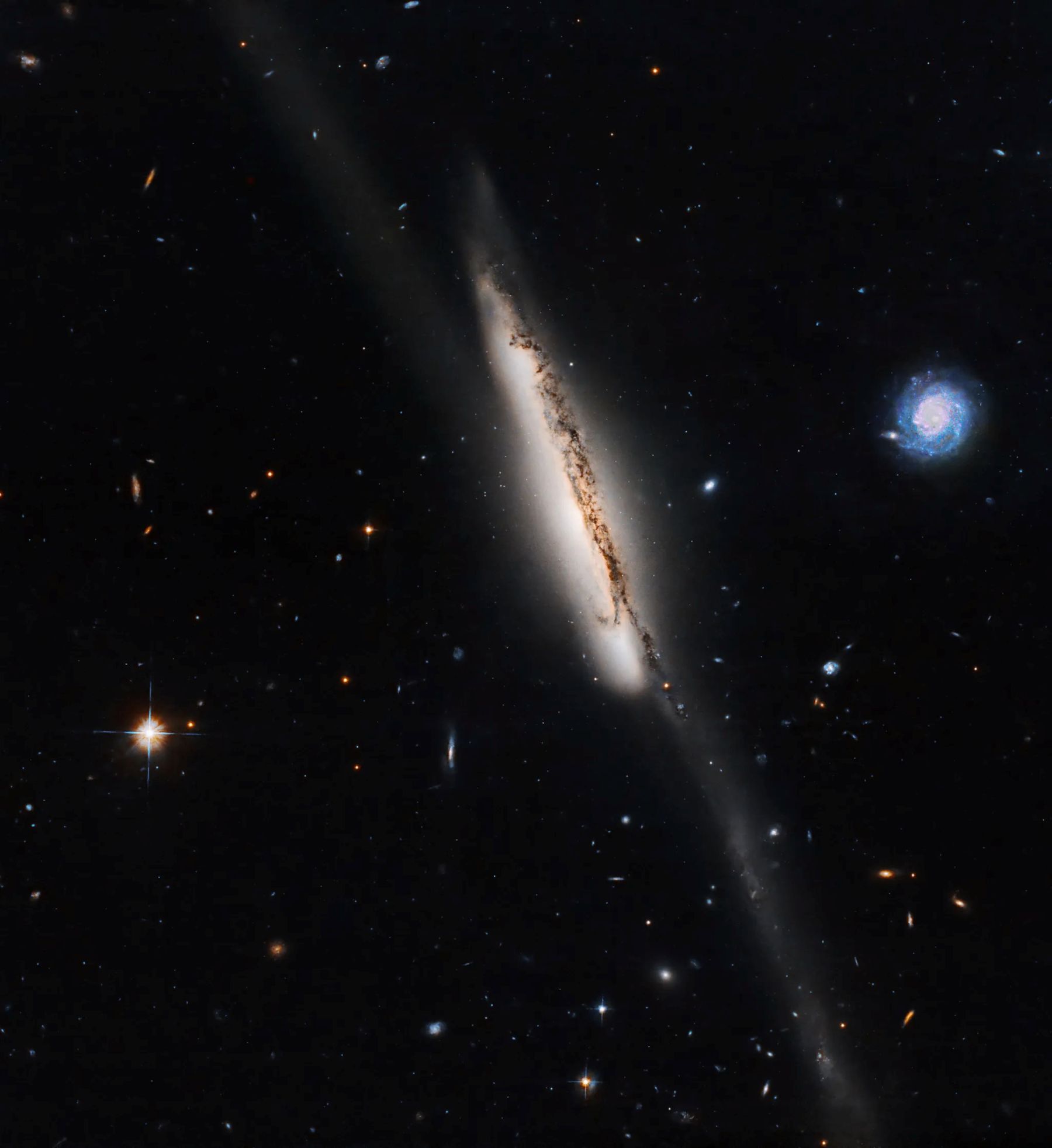Hubble Captures a Faint Bridge of Stars

One of the galaxies from a galactic group known as Arp 295 is visible in this new NASA Hubble Space Telescope image, along with part of the faint 250,000-light-year-long bridge of stars and gas that stretches between two of the galaxies. The galaxies have passed close enough together that their mutual gravity created this cosmic streamer.
When galaxies pass close enough to gravitationally disrupt each other’s shape, they are known as interacting galaxies. This type of interaction happens over billions of years and repeated close passages can result in the merger of the two galaxies. Galactic mergers are thought to be common, and even our own Milky Way is expected to merge with the massive, neighboring Andromeda galaxy in about 4 billion years.
Arp 295 is made up of three spiral galaxies designated Arp 295a, Arp 295b, and Arp 295c. Arp 295a is the edge-on galaxy seen in the center of the image, and Arp 295c is the smaller and bluer face-on spiral to its right. Arp 295b is off the top left of this image and not visible here. Together, they are the largest of a loose grouping of galaxies located about 270 million light-years in the direction of the constellation Aquarius.
LEARN MORE:
Hubble Science: Galaxy Details and Mergers





